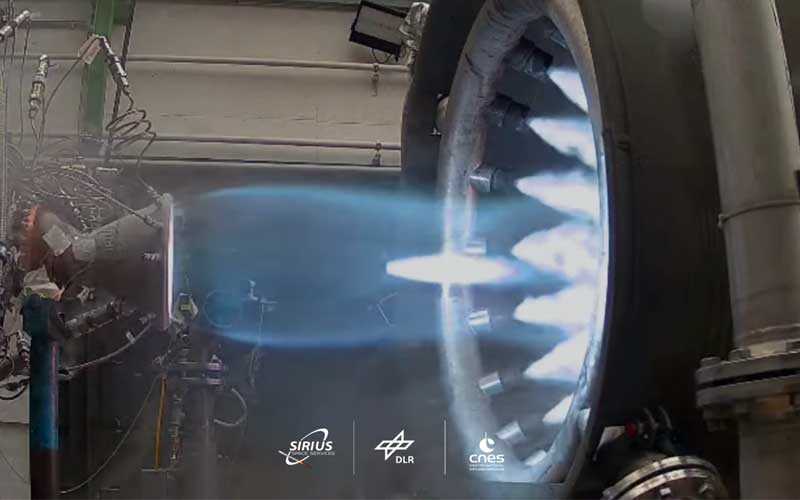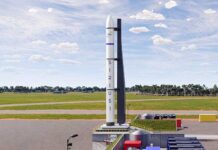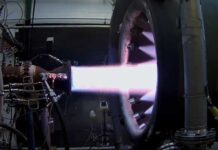
French launch startup Sirius Space Services announced on 17 October that it had completed a hot fire test campaign of the thrust chamber for its STAR-1 rocket engine.
In December 2023, the company successfully kicked off an extended hot fire test campaign of a STAR-1 thrust chamber prototype. The test campaign was conducted on the P8 test stand at the DLR testing facility in Lampoldshausen, Germany.
According to a 17 October update, the extended test campaign was officially completed on 8 October. During the campaign, the prototype completed two 60-second hot fire tests powered by liquid methane and liquid oxygen. The successful completion of the test campaign validates the design of the STAR-1 thrust chamber, which is produced by Sirius Space using additive manufacturing.
The company will now work toward the first full-scale STAR-1 engine test in the second quarter of 2025.
Sirius Space Rockets
Sirius Space Services is developing a range of three rockets that all use a modular booster system. Sirius 1 will be a two-stage single-stick rocket capable of delivering 175 kilograms to low Earth orbit (LEO). Sirius 13 will feature two strap-on boosters and will have the capacity to deliver 600 kilograms to LEO. Finally, the Sirius 15 rocket will feature four boosters and will be capable of carrying payloads of up to 1,000 kilograms.
The two boosters and core stage of the Sirius 13 rocket will feature a combined 27 STAR-1 engines. The Sirius 15 rocket’s four boosters and core stage will boast a combined 45 STAR-1 rocket engines. As a point of reference, a SpaceX Super Heavy booster features 33 engines.




